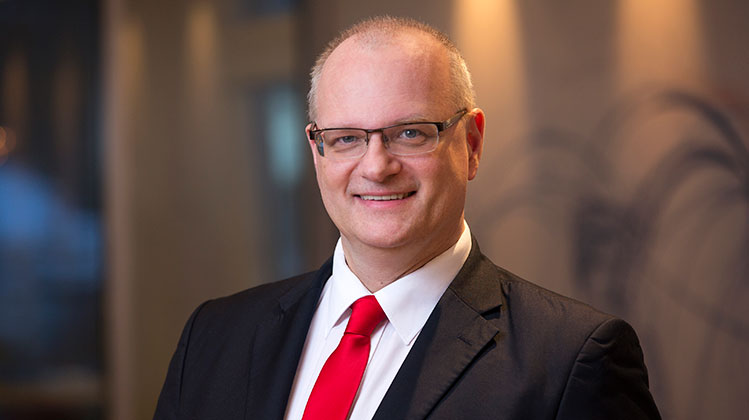An interview with Björn Óli Hauksson, CEO Isavia. By Ross Falconer

Björn Óli Hauksson, CEO Isavia: “Keflavik Airport has played a pivotal role in promoting Iceland as a tourist destination rivalled by few others. Airlines have increasingly seen Keflavik as a hub bridging Europe and North America. With connections becoming easier with ever-increasing destination options, Keflavik Airport is fast becoming the ideal way to connect the continents.”
Iceland is often referred to as ‘The Land of Fire and Ice’, and is famous for the majestic beauty of its natural landscapes. It is home to some of the largest glaciers in Europe, and most active volcanoes in the world. Tourism is, therefore, a vital segment of the country’s economy, generating about 10% of Icelandic GDP in 2016 according to Statistics Iceland. Visitor numbers grew by an impressive 24.2% to 2.2 million in 2017 (several times the country’s population of 334,000).
“Tourism has played a very important role in reviving the Icelandic economy in the past decade since the banking crash,” says Björn Óli Hauksson, CEO Isavia. “Keflavik Airport has played a pivotal role in promoting Iceland as a tourist destination rivalled by few others. Airlines have increasingly seen Keflavik as a hub bridging Europe and North America. With connections becoming easier with ever-increasing destination options, Keflavik Airport is fast becoming the ideal way to connect the continents.”
The recent connection to Dallas/Fort Worth by three carriers – Icelandair, WOW air and American Airlines – is yet another important building block for the future. “Our biggest markets are the US and UK. We now have all of the North American ‘Big 4’ – Delta, American, United, Air Canada – operating to Iceland. We are also experiencing a lot of growth from Asia and see a definite opportunity there. Our main goals now are to maintain growth and look for new opportunities, for example a direct Asian service.”

Keflavik Airport has experienced rapid growth in passenger numbers – from 4.8 million in 2015 to a projected 10.4 million in 2018.
Keflavik Airport has experienced rapid growth in passenger numbers – from 4.8 million in 2015 to a projected 10.4 million in 2018. There are a number of reasons for this success. One is airlines’ increasing use of widebody aircraft, which has resulted in higher passenger load factors.
Then there is the positioning of Keflavik as a hub, which is facilitated by fast turnarounds and short connection times. “Keflavik is a large airport with capacity available at off peak times,” Hauksson explains. “This is something we have utilised and, as of spring 2017, we have offered an off-peak incentive to try and get better use of the terminal infrastructure, release pressure from the peaks, and get a better overall operational efficiency.”
Of course, such rapid growth presents operational challenges, and Isavia has invested tens of billions of Icelandic kronur in construction projects to meet this. Continued development is on the cards.
Design of two major terminal expansions will commence this summer, with construction to start in 2019. “The first phase includes expansion of the north terminal to the east, which will host completely new baggage screening facilities,” says Hauksson. “The expansion will only be on the basement level, and is tactically-placed to be able to serve its purpose within the scope of the airport’s masterplan. The size of the baggage screening basement is expected to be around 8,000sqm.”
Secondly, the connection corridor between the north terminal and south satellite is to be widened, along with a substantial expansion of the north terminal to the south. The widening of the corridor will bring hugely improved waiting areas for the gates located in the corridor, and open up the possibility of new bus gates.
Phase 2 will see construction of pier east and, in the longer-term, pier west, which is included in the airport’s masterplan. “The expansion will host a centralised passport control, as well as a significantly larger commercial area in the north terminal, where the food & beverage selection, in particular, will be increased,” Hauksson adds. “The widening of the connection corridor, and expansion of the north terminal to the south, are expected to be around 25,000sqm spread over three floors.”
The first phase of Keflavik’s major development plan involves an investment of some €245 million. The second phase, which includes the pier east and a new passenger processing terminal, along with airfield improvements, is expected to be completed between 2023 and 2025.







